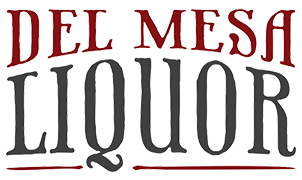When we think of wine, we typically imagine a beautiful evening, a lovely dinner paired with the perfect glass of red or white, savoring every sip. But, did you know that wine also has a prominent place in the kitchen, not just on the dinner table?
Yes, it's a top-tier secret of many chefs and home cooks worldwide. Using wine as an ingredient in your recipes can elevate your dishes and add an exquisite depth of flavor that's hard to match. But, how exactly does this work? Let's explore!
Before we start, it's important to remember that the wine you cook with should be the same quality as the wine you would comfortably drink. After all, if you wouldn't savor it in a glass, why would you want it in your food? This is where your local alcohol store becomes vital to your cooking adventure. It's the go-to place to pick the right wine, helping you make an ordinary meal extraordinary.
Cooking With Wine: The Basics
Cooking with wine isn't overly complicated, but it requires some knowledge and experimentation.
- Choice of Wine: There's no one-size-fits-all when choosing a wine to cook with. Generally, dry white wines are excellent for cooking seafood, chicken, and creamy sauces, while red wines are better suited to red meat, stews, and tomato-based sauces. Visit your nearest alcohol store and ask for their recommendations - their expertise can guide you in the right direction.
- When to Add Wine: Timing is critical. Add the wine too early, and you could boil away its flavor. Add it too late, and the wine might overpower the dish. Typically, wine should be added after your meat is browned or your veggies are sautéed, but before you add items like broth or cream.
- How Much to Use: Less is more when cooking with wine. Start with a small amount and taste your dish as you go along. Remember, you can always add more if needed.
Why Wine Works: The Science Behind The Flavor
Now, you might be wondering why wine, out of all the ingredients in your pantry, has such a magical effect on your dishes. The answer lies in the science of taste. Wine contains alcohol, which can dissolve fat-soluble flavor compounds that water can't. This means that when you add wine to a dish, it releases and blends these flavors, enhancing the overall taste of the food.
Moreover, wine also contains natural sugars, acids, and tannins. These elements can help balance the flavors in your dish. The sugar adds sweetness, the acid can cut through the richness, and the tannins can mellow out overly intense flavors. Wine is a balancing agent, harmonizing various flavors and making your dish taste well-rounded.

Image: Freepik
A Visit To The Alcohol Store: Choosing The Right Wine
Wandering through your local alcohol store, you might feel overwhelmed by the vast selection of wines. Don't worry! Here are a few tips to help you pick the right bottle:
- Avoid Cooking Wines: Cooking wines available in supermarkets often have salt and other additives. Instead, look for wines that you'd enjoy drinking.
- Consider The Dish: White wines pair well with light meats, while reds go well with darker meats. But there's more nuance to it. If your dish is acidic (like a tomato-based pasta sauce), you might want a wine with high acidity to match, like a Sangiovese. If you're cooking something rich and fatty, a tannic wine like Cabernet Sauvignon can help balance it.
- Please Don't Break The Bank: While it's essential to use quality wine, it doesn't need to be the most expensive bottle. A mid-range, decent quality wine will work perfectly.
Recipes To Get You Started
To help you kickstart your culinary adventure with wine, here are a few simple recipes that are easy to prepare:
White Wine Garlic Shrimp: Sauté shrimp in olive oil and garlic. Once cooked, deglaze the pan with a splash of white wine, cook until the alcohol has evaporated, and finish with a sprinkle of parsley.
Red Wine Beef Stew: Brown your meat and deglaze the pot with hearty red wine. Add your veggies and broth, and let it simmer. The wine will add an incredible depth to the stew.

Image: Freepik
A Taste Of Adventure: Experimenting With Wine
Cooking with wine isn't just about following recipes, it's also about experimenting. Your forays into your local alcohol store are opportunities to pick up ingredients and spark creativity. Try different types of wine, from various regions and made from different grapes.
Maybe a fruity Pinot Noir from Oregon gives your marinara sauce a surprising twist, or a crisp Sauvignon Blanc from New Zealand gives your clam chowder an extra zest.
Understanding The Role Of Wine In Cooking
Here are a few key reasons why wine is such a fantastic cooking ingredient:
- Deglazing: Wine is excellent for deglazing a pan to lift the fond (those delicious little browned bits) after searing meat or vegetables. This process extracts the maximum flavor locked in the pan, infusing it into your dish.
- Marinades: Due to its acidity, Wine is a superb marinade for meats. It helps tenderize the meat while also imparting flavor. Remember not to marinate too long, or the acidity can start to 'cook' the meat.
- Poaching: Poaching fruits or even some types of meat in wine can bring a sophisticated edge to your dish. The wine imparts a delicate flavor to the poached ingredients, making them taste luxurious.
Cooking With Wine: A Word Of Caution
While wine can enhance your food's flavor, it's crucial to remember that alcohol doesn't thoroughly cook out. According to the U.S. Department of Agriculture, up to 85 percent of the alcohol in wine can remain after cooking, depending on the cooking method and time. If you're serving individuals who avoid alcohol, you must inform them or find an alternative cooking method.

Image: Freepik
Final Thoughts
There's a certain romance to the idea of a simmering pot, the scents of garlic, onions, and herbs wafting through the air, all deepened by a good wine's warm, inviting aroma. It's an image that speaks of love for food, for flavor, and for the people we're preparing it for.
Whether you're a cooking novice or a seasoned chef, exploring new ingredients and techniques is always exciting. Wine, with its ability to meld, highlight, and enhance other flavors, is an ingredient that demands some exploration. So, the next time you're in your local alcohol store, take a moment to peruse the wine aisle for your drinking pleasure and cooking adventures.
Remember, the world of cooking with wine is not confined to high-end restaurants. It's a secret weapon every home cook can and should have in their arsenal. So go ahead, uncork that bottle and let the magical symphony of flavors sing in your dishes. Wine in cooking isn't just about the alcohol or the flavor it imparts - it's about creating memorable meals that resonate with comfort, love, and culinary adventure. To cook with wine and unforgettable flavors brings cheers!
 Log in
Log in
 My Wishlist
My Wishlist Reward Program
Reward Program Corporate Gifts
Corporate Gifts Customer Help
Customer Help


